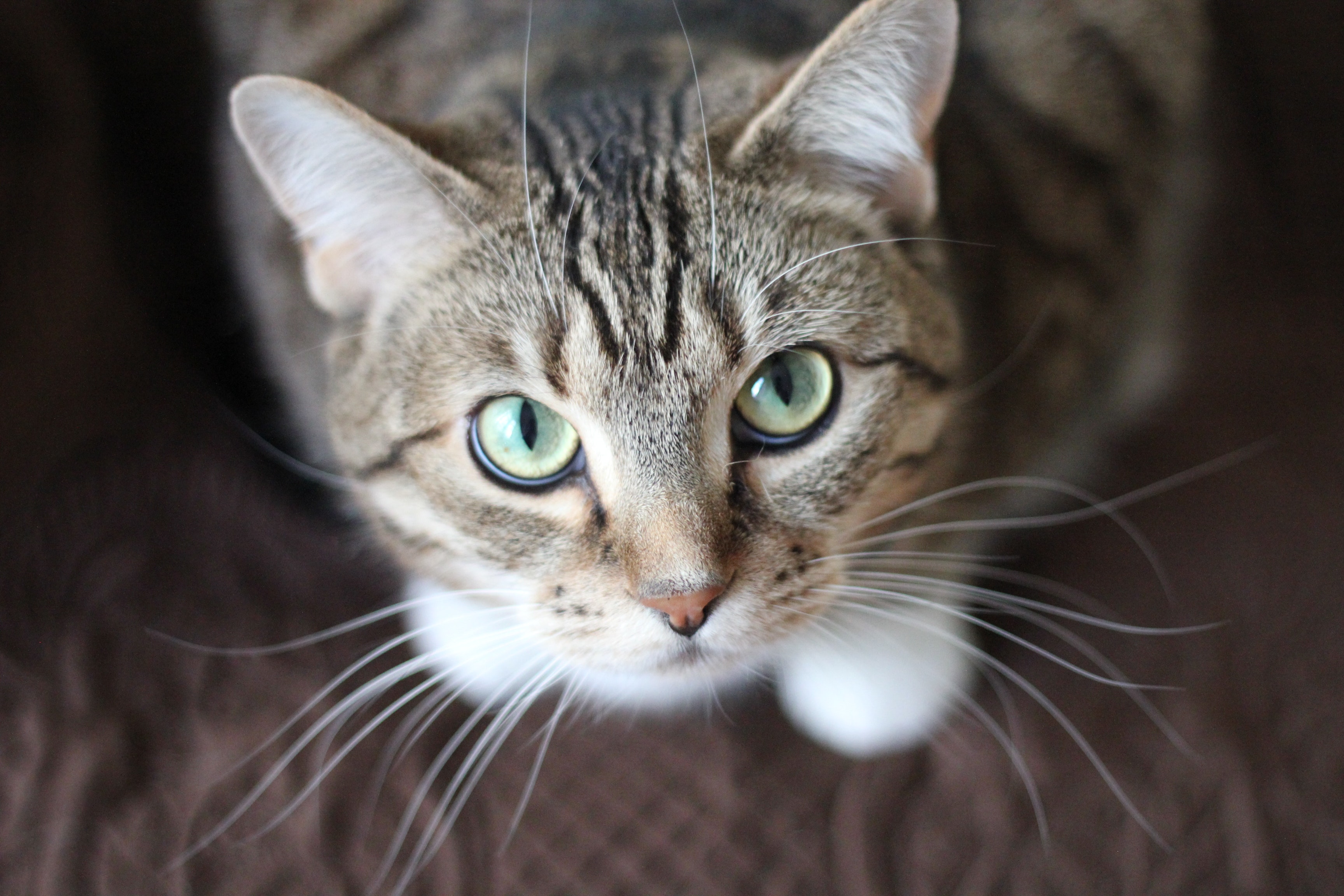Imagine a world where you can confidently host gatherings at your place without feeling a lingering dread about the state of your carpets. A world where you don’t need to constantly tiptoe around an unpleasant stench or meticulously scan the room for any suspicious wet spots. With just a little guidance and a touch of feline finesse, this world can become your reality! In this article, we delve into the realm of litter box education, unveiling the secrets to teaching your beloved cat the art of perfect potty manners. Bid farewell to those embarrassing accidents and say hello to a harmonious coexistence with your furry companion, as we provide you with an array of tips and tricks for a clean and odor-free home.
1. Understanding the Importance of Proper Litter Box Training for Cats
Proper litter box training for cats is more than just a convenience for pet owners. It is a crucial aspect of ensuring the health and well-being of our feline friends. Cats are naturally clean animals, and providing them with a designated area to eliminate waste is essential for their physical and psychological comfort.
To truly understand the importance of litter box training, we must consider the following:
- Hygiene: Litter box training helps maintain a clean and odor-free environment for both the cat and its owners. By using a litter box, cats are less likely to eliminate waste in undesirable areas, such as carpets or furniture.
- Prevent Behavioral Issues: Improper litter box training can lead to various behavioral issues in cats, including anxiety, stress, and even aggression. By providing a well-maintained litter box, we can prevent these issues and ensure our furry companions are happy and content.
- Health Benefits: A properly managed litter box promotes good hygiene, reducing the risk of infections and diseases in cats. Regular monitoring of its contents can also help identify potential health issues early on, such as urinary tract infections or digestive problems.
In conclusion, goes beyond just convenience. It is an investment in our cat’s happiness and well-being. By providing a clean and comfortable space for them to eliminate waste, we can ensure their physical and mental health remains strong and vibrant.

2. Simple Strategies to Introduce and Familiarize Your Cat with the Litter Box
When it comes to helping your cat become comfortable with their litter box, there are a few simple strategies you can employ. Remember, patience and consistency are key! Here are some effective methods to introduce your feline friend to their new bathroom:
- Create a safe and inviting space: Choose a quiet corner in your home where your cat can have some privacy while using the litter box. Make sure the area is easily accessible and free from any loud noises or disturbances.
- Choose the right litter: Cats have preferences when it comes to litter, so experiment with different types to find the one that your furry friend prefers. Some cats prefer clumping litter, while others may prefer non-clumping or natural alternatives like shredded newspaper or pine pellets.
- Gradual exposure: Begin by placing your cat’s litter box in a familiar location and let them explore it at their own pace. Allow them to sniff and investigate the litter box without any pressure. This helps them get accustomed to the scent and texture.
Continued exposure and gentle encouragement can help your cat understand that their litter box is the designated spot for doing their business. Remember to clean the litter box regularly, as cats are meticulous creatures who prefer cleanliness. With time and positive reinforcement, your cat will become comfortably acquainted with their litter box, ensuring a harmonious and hygienic environment for both you and your furry companion.
3. A Step-by-Step Guide to Encouraging and Rewarding Litter Box Usage in Cats
Encouraging and rewarding litter box usage in cats is essential for a harmonious coexistence with your feline companion. Follow these simple steps to ensure your furry friend becomes a litter box pro in no time:
1. Choose the perfect litter box: Cats have individual preferences when it comes to their bathroom needs. Consider the size, depth, and type of litter box to provide them with the utmost comfort. Some cats prefer covered boxes, while others enjoy open ones. Experiment with different options until you find the ideal fit for your feline friend’s fancy.
2. Location, location, location: Place the litter box in a quiet and easily accessible area. Cats value their privacy, so avoid high traffic areas. Make sure to keep the litter box away from their feeding area to prevent any unpleasant associations.
3. Show them the way: Gently introduce your cat to the litter box by placing them inside and allowing them to sniff around. **Be patient** and offer calm encouragement during this process.
4. Pawsitively positive reinforcement: Once your cat successfully uses the litter box, reward them with praise, a gentle pat, or even a small treat. **Positive reinforcement** is key to reinforcing the desired behavior.
Remember, cats are creatures of habit. Following these steps consistently will help ensure a stress-free and happy litter box experience for both you and your feline friend. Happy littering!
4. Troubleshooting Common Litter Box Issues and Ensuring a Tidy Home Environment
Dealing with litter box problems can be a frustrating experience for any cat owner. Fortunately, there are several effective troubleshooting techniques to help you maintain a consistently clean and odor-free home environment while keeping your furry friend happy. First and foremost, it’s essential to choose the right litter box and litter for your cat. Cats have unique preferences, so experiment with different sizes, styles, and types of litter to find the perfect fit. Remember to provide multiple litter boxes in multi-cat households, placing them in quiet, easily accessible locations throughout your home. This will help reduce any territorial issues and minimize the chances of accidents outside the box.
Strong odors can be a major deterrent for both you and your cat. To combat this issue, consider using unscented litter or ones specifically designed to neutralize odors. Regular cleaning is also crucial. Scoop out waste at least once a day and replace the litter completely every two to three weeks. Additionally, keeping the litter box in a well-ventilated area and using baking soda to absorb any lingering smells can greatly enhance the overall freshness of your home. Don’t forget to regularly clean and disinfect the litter box with mild soap and water to prevent any potential health hazards.
In Conclusion
As we conclude our journey towards a cleaner, more harmonious home, we hope you have found these tips and tricks to be the purrfect solution for your feline friend’s litter box predicament. Remember, patience is paramount when embarking on this educational adventure with your cat.
With each carefully executed step, you are paving the way for peaceful cohabitation and maintaining a spotless abode. Your unwavering dedication to teaching your furball the art of proper litter box usage will not only benefit your living space but also foster a stronger bond between you and your beloved pet.
Always remember, accidents happen, and setbacks may occur along the way. However, armed with the knowledge and wisdom gained from this article, you have the tools to overcome any challenges that come your way. Continue to provide a safe and comfortable environment for your feline companion, and they will undoubtedly rise to the occasion.
Now, it’s time to embark on this adventure with a renewed sense of excitement and determination. Create an ambiance of feline elegance in your home, blissfully free from litter box mishaps. Cherish the purrs of contentment and the delightful sight of your cat prancing towards their designated bathroom.
As you bid farewell, we leave you with one last tidbit of wisdom: embrace the journey, embrace the mess, and keep those paws elegantly clean. May your home forever be a treasure trove of feline serenity and impeccably managed litter boxes.
Cats are delightful and beloved for their independent personalities, yet when it comes to using the litter box, they can be a bit finicky. Fortunately, with some patience and understanding, you can teach cats to use the litter box with ease. Keep these tips in mind as you help your cat become more comfortable in the litter box.
Start with the Right Size Litter Box
The size of your cat’s litter box is important for their comfort and proper use. If the litter box is too large, your cat may feel intimidated by the space and will be less likely to use it. On the other hand, if the litter box is too small, your cat may struggle to use it comfortably. To ensure your cat is happy using the litter box, measure the length of your cat’s body from nose to hindquarters, and buy a box that is an inch or two longer and wider than your cat’s measurements.
Clean Frequently
Cats are fastidious animals that crave cleanliness and look for cues from their surroundings. If the litter box isn’t consistently clean, cats may become put off from using it. While it’s important to completely clean the litter box and its contents at least once a week, it’s important to remove solids and clumps on a daily basis, as well. There are a number of litter box options on the market today, making it easier to keep litter boxes clean. From self-cleaning boxes to disposable units, there are options to fit every lifestyle.
Provide Plenty of Options
If your cat refuses to use the litter box, giving them additional options can help. Put two or three litter boxes around the house in areas your cat likes to frequent. You can also add an outdoor litter box for cats that like to spend time in the sunshine. litter boxes with high sides can also be beneficial for older cats or cats with mobility issues, as these boxes can be easier to maneuver and climb into.
Be Patient
Patience is key when it comes to helping cats learn to use the litter box. Encourage your cat with treats and positive reinforcement, as cats respond well to praise and rewards. Avoid punishing your cat if they have an accident, as this can only make the problem worse. Instead, work on retraining your cat to associate the litter box with positive experiences.
Cats can learn to use the litter box with patience and consistency. By following the tips above and using the right tools, you can help your cat become a litter box master in no time.





